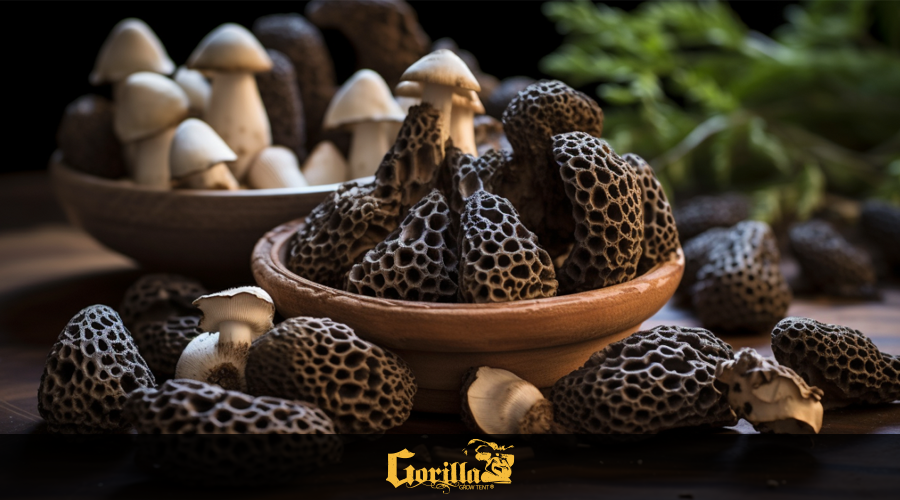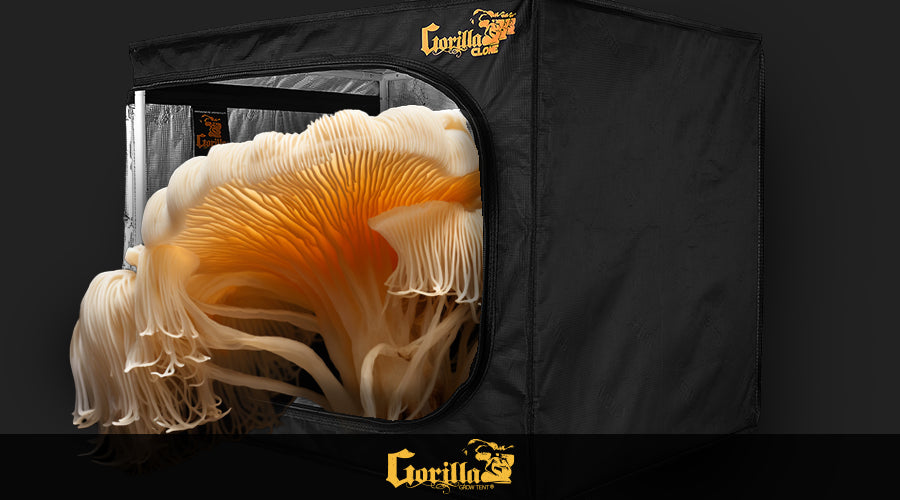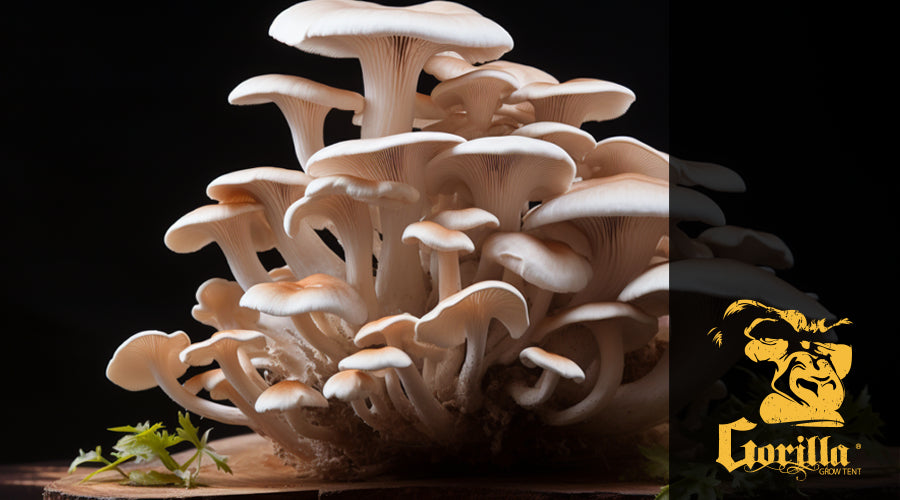
How to Grow Morel Mushrooms
Cultivating Enigmatic Delicacies: A Guide to Growing Morel Mushrooms
Morel mushrooms (Morchella spp.) have long held a place of fascination among nature enthusiasts and culinary connoisseurs alike. These prized fungi have become a sought-after delicacy with their unique appearance, distinct flavor profile, and elusiveness in the wild. However, the unpredictable nature of morel mushroom growth in the wild has led many to explore the possibility of cultivating them at home.
This comprehensive guide delve into the art and science of growing morel mushrooms, enabling you to embark on a rewarding journey of cultivating these enigmatic treasures in your garden.

Growing Morel Mushrooms at Home Like a Pro
Morel mushrooms are renowned for their distinctive appearance, featuring a honeycomb-like cap ranging from pale yellow to dark brown. They thrive in temperate climates and are often found in woodland areas with well-drained soil and disturbance history. Morels are mycorrhizal fungi, meaning they form a symbiotic relationship with trees, exchanging nutrients for carbohydrates. Replicating this intricate relationship is key to successfully cultivating morel mushrooms.
Selecting the Right Location
Choosing an appropriate location is crucial for morel mushroom cultivation. Look for a spot with indirect sunlight and well-drained soil enriched with organic matter. Deciduous trees such as oak, ash, elm, and apple are good candidates for establishing the mycorrhizal relationship.
Preparing the Soil
Create a suitable substrate by mixing organic materials such as compost, peat moss, and hardwood chips. Morels thrive in soil with a pH range of 6.0 to 7.5. Properly preparing the soil provides a hospitable environment for the mycelium to grow and eventually produce morel fruiting bodies.
Establishing Mycelium
Acquiring morel mycelium or spawn is essential for successful cultivation. You can purchase morel spawn from reputable suppliers or attempt to create your own by taking samples from wild morels (note: this process can be complex and may require specific expertise). Mix the spawn into your prepared substrate and allow the mycelium to colonize the soil over several months.
Mimicking Natural Conditions
To encourage fruiting, simulate the conditions morels encounter in the wild. Create a moist environment by irrigating the area and using mulch to retain moisture. Maintain a consistent temperature range of around 50-60°F (10-15°C), which mirrors the springtime conditions that trigger morel growth.
Patience is Key
Morel cultivation requires patience and dedication. It can take several months to a year for the mycelium to colonize and produce fruiting bodies. Regularly monitor soil moisture levels, temperature, and overall growth progress.
Harvesting and Enjoying
As morel mushrooms emerge from the soil, carefully harvest them by gently twisting and pulling. Avoid disturbing the mycelium network to ensure future growth. These edible gems can be used in a variety of culinary dishes, from sautés and omelets to risottos and sauces.
A Step-by-Step Guide to Growing Morel Mushrooms
Spore Propagation and Mycelium Cultivation
Spores: Morel mushrooms begin their life cycle as spores. Collecting spores from mature morels in the wild can be challenging due to their small size, but it is a potential method for cultivating your own mycelium.
Sterile Technique: If you're propagating spores, maintaining a sterile environment is crucial to prevent contamination. Use a spore print to inoculate a nutrient-rich agar medium to encourage mycelial growth.
Selecting Morel Varieties
Morel species: There are several species of morel mushrooms, each with distinct preferences and habitat requirements. Research the specific species native to your region for optimal cultivation.
Companion Planting
Interplanting: To mimic the natural mycorrhizal relationship between morels and trees, consider planting host trees or shrubs alongside your morel patch. Trees like apple, oak, pine, and ash are often compatible choices.
Mulching and Moisture Retention
Mulching: Apply a layer of organic mulch, such as straw or wood chips, to help maintain soil moisture and create a favorable microclimate for morel growth.
Regular Watering: Consistent moisture is essential for successful fruiting. Use a fine mist sprayer to ensure the substrate remains damp without becoming waterlogged.
Fruiting Conditions
Temperature and Timing: As the mycelium matures, expose it to a controlled temperature shift to stimulate fruiting. Gradually lower the temperature to simulate the changing seasons, mimicking the conditions that trigger morel growth in the wild.
Humidity and Ventilation: Maintain high humidity levels by misting regularly, and ensure proper air circulation by providing ventilation to prevent mold growth.
Pest and Disease Management
Pests: Keep an eye out for slugs, insects, and rodents that might damage or consume emerging morels. Natural remedies or protective barriers can help deter these pests.
Diseases: Be vigilant for signs of contamination or fungal diseases. Isolate and address any affected areas promptly.
Harvesting and Sustainability
Responsible Harvesting: Practice ethical harvesting by only picking mature morels and leaving some behind to release spores and support the continued growth of your patch.
Sustainable Practices: Replenish the soil with organic matter and maintain proper mycorrhizal relationships by caring for the host trees. This helps ensure long-term success and sustainability.
Cold Stratification and Triggering Fruiting
Cold Treatment: Some cultivators employ a cold stratification process to mimic the natural freeze-thaw cycles that trigger morel fruiting. Place inoculated substrates in a cold environment (refrigerator) for a few weeks before gradually raising the temperature.
Spore Slurry Inoculation
Spore Slurry: Create a spore slurry by mixing spores with water and applying it to your prepared substrate. This technique may promote more even distribution of spores and mycelium.
Outdoor Beds and Patches
Establish Outdoor Beds: Consider creating designated outdoor morel beds by amending the soil with organic matter and strategically placing host trees or shrubs.
Companion Plants: Certain companion plants, like dandelions and nettles, have been observed growing near morels in the wild. Experiment with incorporating these plants into your outdoor bed.
Mycorrhizal Plant Partnerships
Diverse Plant Associations: Beyond trees, explore mycorrhizal partnerships with other plants, such as wildflowers, to encourage morel growth and diversify your cultivation efforts.
Controlled Environment Chambers
Greenhouse or Terrarium: Creating a controlled environment chamber, such as a greenhouse or terrarium, allows for precise regulation of temperature, humidity, and lighting conditions, optimizing morel growth.
Multiple Substrate Layers
Layered Approach: Build substrates with multiple layers, each containing different materials. This can mimic the organic layers of natural morel habitats and encourage fruiting.
Agitating the Soil
Light Disturbance: Gently agitate the soil around your morel patch to simulate natural disturbances, triggering mycelium growth and potentially enhancing fruiting.
Genetic Diversity and Hybridization
Hybrid Strains: Explore the potential for hybridizing different morel strains to create varieties that adapt better to specific conditions or exhibit unique traits.
Microbial Inoculants
Microbial Partnerships: Introduce beneficial microbes to the soil, which can enhance mycorrhizal connections and overall soil health, potentially boosting morel growth.
Market and Culinary Opportunities
Culinary Ventures: If your morel cultivation efforts yield a successful harvest, consider exploring opportunities to supply local restaurants, farmers' markets, or gourmet food stores with your prized mushrooms.
Cultivating morel mushrooms is a dynamic and intricate endeavor that combines scientific exploration, environmental stewardship, and culinary passion. As you delve into the advanced techniques and strategies outlined above, remember that each step brings you closer to unlocking the secrets of successful morel cultivation.
Whether you're driven by the desire to taste the exquisite flavors of these elusive mushrooms or the thrill of unraveling their mysteries, cultivating morel mushrooms is a remarkable and enriching pursuit.
Happy cultivating, and may your efforts yield a bountiful and delicious harvest!


